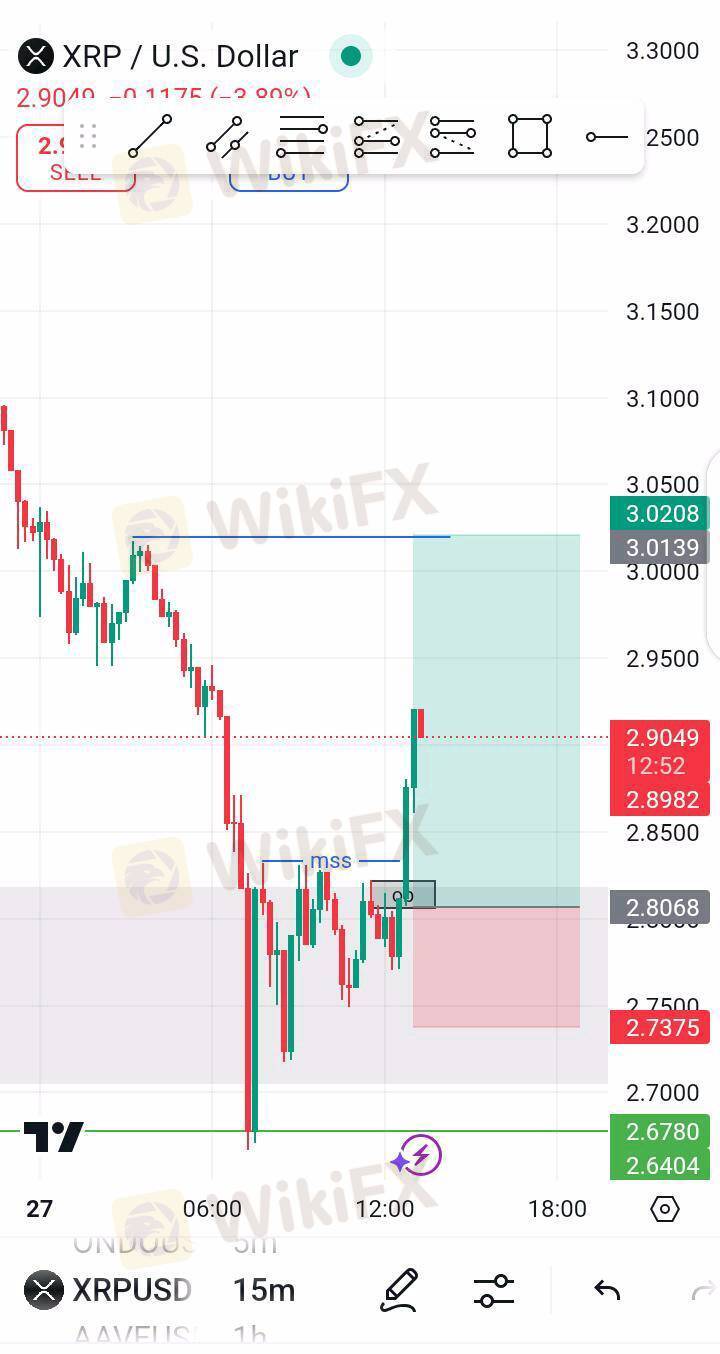
2025-01-29 03:44
A l'instar de l'industrieHow to use a trialing stop in forex
#firstdealofthenewyearAKEEL
A trailing stop in forex trading is a type of stop-loss order that moves with the price as it advances in your favor. It’s designed to lock in profits while minimizing losses by automatically adjusting the stop level as the market price moves. Here's how to use it effectively:
1. Understand How It Works
A trailing stop is placed at a certain distance (in pips, points, or percentage) from the current market price.
As the market price moves in your favor, the trailing stop moves with it, maintaining the set distance.
If the market reverses, the trailing stop remains fixed at the highest level it reached, closing the trade when the price hits the stop level.
2. Set the Trailing Stop Parameters
Distance: Decide the distance between the market price and your trailing stop. This could depend on:
Volatility: Use wider stops in volatile markets.
Timeframe: Short-term traders may use smaller distances, while swing traders may choose larger ones.
Manual or Automatic Adjustment: Most trading platforms allow you to set the trailing stop to adjust automatically. You can also manage it manually.
3. How to Place a Trailing Stop
On Trading Platforms:
Find the "Trailing Stop" option in your trading platform.
Set the trailing stop distance (e.g., 10 pips, 1% of the current price, etc.).
Example:
If you buy a currency pair at 1.2000 and set a 10-pip trailing stop, your stop-loss is initially at 1.1990.
If the price rises to 1.2050, your stop-loss adjusts to 1.2040.
If the price reverses to 1.2040, the trade closes automatically.
4. Combine with a Trading Strategy
Use a trailing stop as part of your broader trading strategy. It works well when:
Trending Markets: Prices move steadily in one direction.
Breakout Trades: Following a strong move after a breakout.
Avoid using trailing stops in choppy markets as they may trigger prematurely.
5. Test and Optimize
Test different trailing stop distances on a demo account.
Analyze past trades to see how trailing stops could improve your results.
Benefits of a Trailing Stop
Lock in Profits: You secure gains as the trade moves in your favor.
Risk Management: Helps you minimize losses if the market turns.
Emotion-Free Trading: Automates exit decisions, reducing emotional influence.
Would you like tips on setting trailing stops in specific trading platforms or strategies?
#firstdealofthenewyearAKEEL
J'aime 0
Abou Ahmad
Trader
Discussions recherchées
A l'instar de l'industrie
WikiFX recrute: Un(e) spécialiste e-marketing Forex à temps partiel
A l'instar de l'industrie
WikiFX recrute un(e) spécialiste marketing
A l'instar de l'industrie
Tirages au sort WikiFX - Tentez votre chance pour gagner un crédit d’appel !
A l'instar de l'industrie
Chemin à la fortune : Indications de l'activité Airdrop WikiBit
Analyse de marché
construction
A l'instar de l'industrie
Route à la Fortune : Indications de l'activité Airdrop Spécial WikiBit
Catégorisation des marchés

Plateformes

Signalement

Agents

Recrutement

EA

A l'instar de l'industrie

Marché

Indicateur
How to use a trialing stop in forex
 Nigeria | 2025-01-29 03:44
Nigeria | 2025-01-29 03:44#firstdealofthenewyearAKEEL
A trailing stop in forex trading is a type of stop-loss order that moves with the price as it advances in your favor. It’s designed to lock in profits while minimizing losses by automatically adjusting the stop level as the market price moves. Here's how to use it effectively:
1. Understand How It Works
A trailing stop is placed at a certain distance (in pips, points, or percentage) from the current market price.
As the market price moves in your favor, the trailing stop moves with it, maintaining the set distance.
If the market reverses, the trailing stop remains fixed at the highest level it reached, closing the trade when the price hits the stop level.
2. Set the Trailing Stop Parameters
Distance: Decide the distance between the market price and your trailing stop. This could depend on:
Volatility: Use wider stops in volatile markets.
Timeframe: Short-term traders may use smaller distances, while swing traders may choose larger ones.
Manual or Automatic Adjustment: Most trading platforms allow you to set the trailing stop to adjust automatically. You can also manage it manually.
3. How to Place a Trailing Stop
On Trading Platforms:
Find the "Trailing Stop" option in your trading platform.
Set the trailing stop distance (e.g., 10 pips, 1% of the current price, etc.).
Example:
If you buy a currency pair at 1.2000 and set a 10-pip trailing stop, your stop-loss is initially at 1.1990.
If the price rises to 1.2050, your stop-loss adjusts to 1.2040.
If the price reverses to 1.2040, the trade closes automatically.
4. Combine with a Trading Strategy
Use a trailing stop as part of your broader trading strategy. It works well when:
Trending Markets: Prices move steadily in one direction.
Breakout Trades: Following a strong move after a breakout.
Avoid using trailing stops in choppy markets as they may trigger prematurely.
5. Test and Optimize
Test different trailing stop distances on a demo account.
Analyze past trades to see how trailing stops could improve your results.
Benefits of a Trailing Stop
Lock in Profits: You secure gains as the trade moves in your favor.
Risk Management: Helps you minimize losses if the market turns.
Emotion-Free Trading: Automates exit decisions, reducing emotional influence.
Would you like tips on setting trailing stops in specific trading platforms or strategies?
#firstdealofthenewyearAKEEL
J'aime 0
Je veux faire un commentaire aussi.
Poser une question
0commentaires

Aucun commentaire pour l'instant. Soyez le premier de faire un commentaire !

Poser une question
Aucun commentaire pour l'instant. Soyez le premier de faire un commentaire !